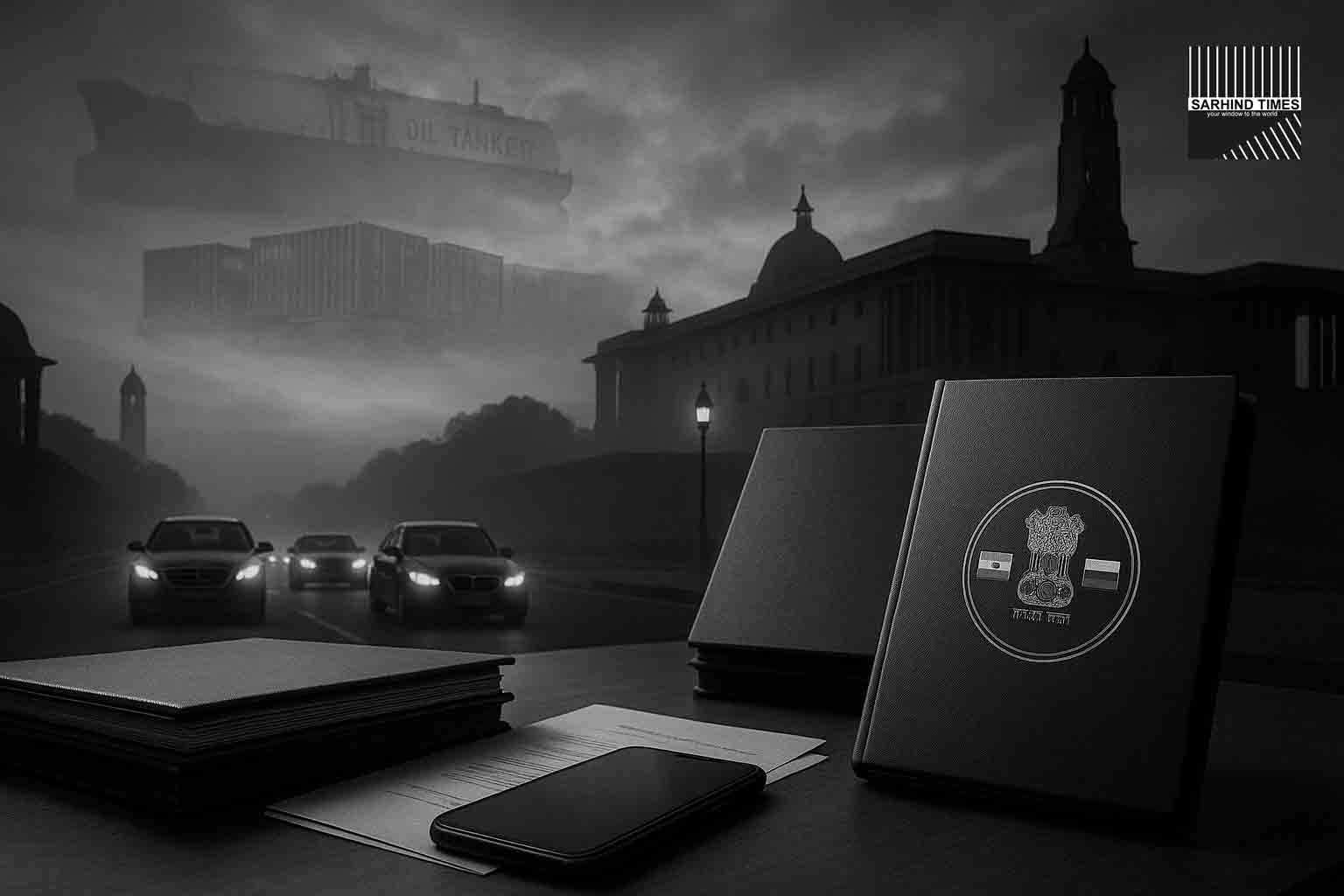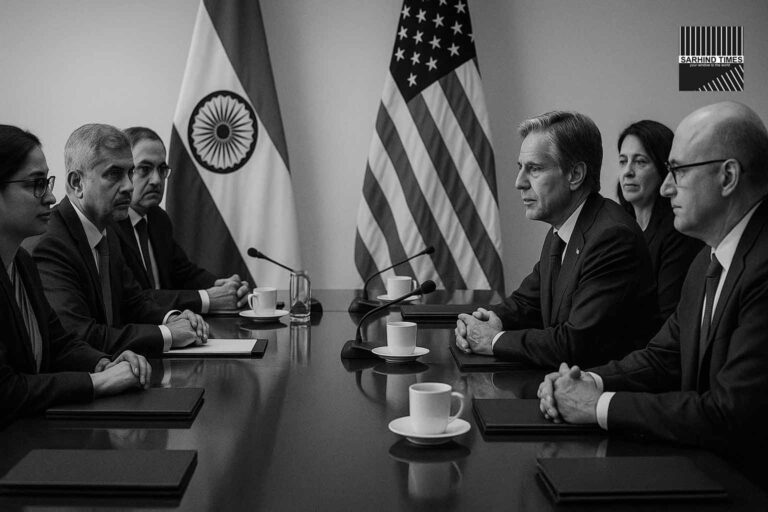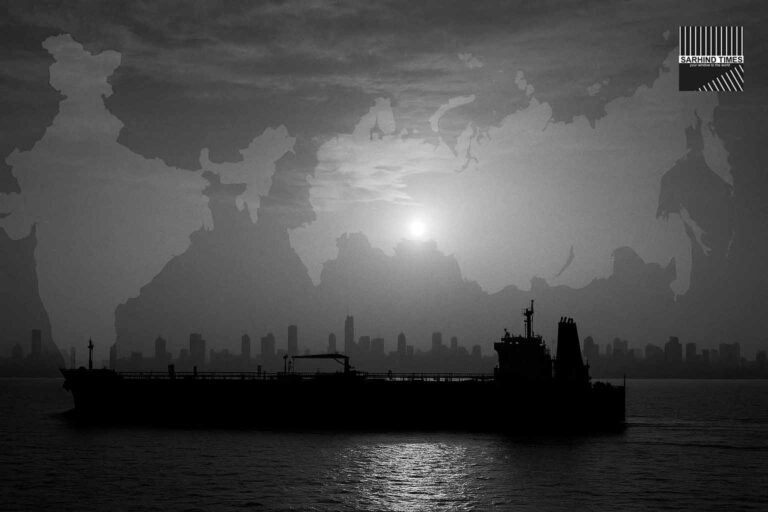By Sarhind Times Diplomatic Bureau | New Delhi | October 2, 2025
NEW DELHI: After years of pandemic interruptions and wartime complications, the India–Russia Annual Summit is set for a December revival in the capital, with multiple outlets reporting that Russian President Vladimir Putin will visit on December 5–6 for talks with Prime Minister Narendra Modi. While New Delhi typically confirms such high-level visits closer to the date, diplomatic reporting across Indian and international media aligns on the early-December window; Moscow’s public signals since late August also pointed to a December trip. The reported plan, if realized, would mark Putin’s first India visit since December 6, 2021—the 21st Annual Summit in New Delhi.
Officials familiar with preparations say the agenda spans energy security (especially oil and LNG), nuclear cooperation at Kudankulam, defence spares and servicing for legacy platforms, and payment settlements under sanctions—where the rupee–ruble approach ran into practical limits. The two sides are also likely to review progress on the International North–South Transport Corridor (INSTC) and touch on Arctic cooperation, including scientific and energy linkages.
What’s new: Multiple Indian outlets today reported Dec 5–6 as the working dates; PTI/ET/ToI said December 5 arrival is expected, with FM Sergey Lavrov in New Delhi a few weeks earlier to prepare. The Kremlin and MEA had already signalled intent for a December summit in recent months—even if the exact dates weren’t officially published as of this morning.
What this summit means—and why it matters now
The annual summit is the top rung of the bilateral ladder, a leader-level stock-take that sets the tone for the year ahead: political coordination, defence sustainment, energy flows, new trade corridors, and the thicket of payments that now accompanies any Russia-related transaction. For India, the summit arrives at a delicate moment: domestic growth remains robust, oil remains a price-sensitive input, U.S. trade frictions have recently sharpened, and New Delhi continues to assert strategic autonomy while juggling deeply interdependent partnerships.
For Russia, the stakes are strategic and economic. The Kremlin wants to lock multi-year energy offtake, keep defence after-sales support viable despite sanctions, and embed alternative logistics that route around bottlenecks. The INSTC—linking Russia to India via Iran and the Caspian—is central to that plan; it reduces dependence on traditional sea routes and shortens delivery times for a range of goods.
Dates & optics: what’s reported, what’s official
- Reported window: December 5–6, 2025, New Delhi, for the 23rd Annual Summit. Multiple Indian outlets cited these dates today; some referenced PTI sourcing.
- Pre-summit groundwork: Sergey Lavrov is expected in November to finalize agenda and texts.
- Official posture: The MEA typically confirms VVIP visits closer to the date; public messaging since September has been that both leaders “look forward” to the summit. Reuters and AP previously noted that the Kremlin accepted India’s invitation for a December visit.
- Last in-person summit in India: December 6, 2021 (New Delhi).
The agenda, item by item
1) Energy security: oil, LNG and nuclear
Crude & products: Since early 2022, India has elevated purchases of discounted Russian crude, routing cargoes and payments through complex pathways to minimize sanctions friction. The U.S. has recently tied progress on a broader trade package to India trimming Russian barrels—pressure that New Delhi has resisted, citing energy security for 1.4 billion people. Expect reaffirmations of steady oil flows, with a continued mix of contract and spot volumes.
Gas & LNG: Russia is re-orienting LNG eastward, expanding Arctic LNG 2 output. Though most near-term Arctic cargoes skew to China, Moscow has telegraphed deeper energy cooperation with India as well. The summit could see language on medium-term gas collaboration, storage, or swap constructs, even if immediate Indian offtake from Arctic projects remains complex.
Nuclear: Kudankulam’s long arc. Rosatom and NPCIL continue to add heft at the Kudankulam Nuclear Power Project: with Unit-6’s reactor vessel shipped earlier this year, India’s largest nuclear station is slowly pushing toward its six-unit design. A summit-level readout will likely underscore schedules, localization content, and financing cadence for the later units.
2) Defence sustainment: spares, servicing, and workarounds
India’s armed forces still operate a large Russian-origin inventory—from Su-30 MKIs and MiG-29s to Mi-17 helicopters, S-400 components, T-90 tanks and naval systems. The immediate priority is reliable spares and MRO. Payment channels, shipping insurance, and sanction-proof logistics will dominate the nuts and bolts, even as India localizes production and diversifies new buys. Expect less fanfare on big-ticket acquisitions and more on service life extensions, co-production, and supply chain fixes. (Analyst mapping through 2024-25 shows several Russia-origin orders slowed or re-scoped amid sanctions and India’s “Make in India” pivot.)
3) Payments: from rupee–ruble to third-currency
The headline problem is simple: receipts in rupees are of limited use to Moscow because India’s imports to Russia remain dwarfed by India’s purchases of Russian oil, creating large rupee pools with few goods to spend on. New Delhi and Moscow tried to scale rupee–ruble but suspended the push in 2023 when the math refused to balance. Expect talk of third-currency clearances, perhaps dirham-, yuan-, or euro-legged mechanisms via friendly banks, alongside a continued rupee-ruble pilot for narrow sectors.
4) Logistics: INSTC and Chabahar
On corridors, the INSTC remains the strategic bet—moving containers from India → Iran → Caspian → Russia. Delhi’s Chabahar Port investments feed that spine. Sanctions dynamics complicate timelines; even so, the corridor offers predictable transit-time savings and a geopolitical hedge. A summit note could reaffirm customs harmonization, insurance pools, and port-rail last-mile fixes to make INSTC commercially sticky.
5) The Arctic: a patient conversation
India’s Arctic interest is scientific first and energy-linked second—mapping ice, climate, and shipping prospects. Russia seeks a broader user base for Northern Sea Route services and Arctic energy projects. Expect cautious wording: exploratory cooperation, maritime safety, research exchanges—without locking India into near-term offtake commitments that are commercially premature.
The political weather: balancing Washington, hedging exposure
The diplomatic calendar sets this summit against a noisy backdrop: a tariff-spiked U.S. trade debate over India’s discounted Russian crude and supply-chain hedging. New Delhi’s line has been consistent: it buys where reliable supplies are available, keeps the price at the pump manageable, and declines to litigate Western secondary sanctions into its own energy security. That does not make the U.S. file less important; it means Delhi will fine-tune volumes and routes, not embrace binary choices. The December optics—Modi–Putin in Delhi weeks after openly defying pressure to cut Russian barrels—will be read closely in Washington and Brussels.
Deliverables to watch
- Energy MoUs: Longer-dated supply comfort for oil, statements of intent on gas, and possibly an energy finance framework designed to be sanctions-resilient.
- Nuclear cooperation paragraphs: Updated milestones for Kudankulam Units 5–6 (component deliveries, local content), perhaps referencing schedule assurances for grid timelines.
- Defence sustainment: Language on spares, MRO, co-production where feasible, and a line on S-400 servicing logistics (without granular detail).
- Payments & trade facilitation: A practical acknowledgement that rupee–ruble alone won’t clear the backlog, with third-currency pathways institutionalized.
- INSTC: An implementation annex on customs and insurance, maybe a pilot schedule for time-bound corridors on select lanes.
The Lavrov factor: run-up choreography
If tradition holds, Lavrov’s advance visit will scrub the communiqué text, line-up ministerials, and smooth rough edges on payments language. Expect a joint working group to meet on trade settlements even before he arrives, followed by a tighter draft that leaders can bless with minimal last-minute edits. Indian reporting today places Lavrov in November—a signal that both sides are confident enough on the December window to start the final choreography.
What could derail the script?
- A sudden geopolitical jolt: A sharp escalation on any of the big warfronts can force rescheduling.
- Payments blow-ups: If intermediating banks freeze lines at the last minute, some deliverables could get watered down.
- Sanctions designations: Fresh listings on key Russian entities India transacts with could compel textual caution.
- Domestic calendars: India’s winter session and state-election logistics can compress protocol windows.
None of these is a base case today—but diplomats plan for all of them.
The long view: four themes to track into 2026
1) Structural energy interdependence. Discounts on Russian crude won’t last forever, but structural dependence—in the form of reliable volumes and freight arbitrage—will; India will bargain hard while building diversified supply.
2) Defence de-risking, not decoupling. India’s long-term vector is less import dependence and more domestic production, but the legacy Russian kit will demand spares and servicing for a decade plus. The payment plumbing must hold for that horizon.
3) Corridor politics. The INSTC’s utility goes beyond Russia trade; it spreads route risk in a volatile maritime world. India wants commercial viability and legal predictability—two things sanctions complicate.
4) Narrative management. India will continue to separate its Russia file from its U.S. and Europe files, rejecting linkage even when others insist on it. The December summit is a reminder that multi-alignment remains the operating system.
The history page: summits and cycles
The annual summit has survived swings in global politics. The last in-person meeting in India was December 6, 2021, yielding a raft of agreements and reaffirming the “special and privileged strategic partnership.” After 2021, war and sanctions complicated the annual rhythm: 2022 saw no summit; in 2024, the 22nd summit happened in Russia during PM Modi’s visit, restoring momentum. This 23rd summit in New Delhi completes the cycle—back to India, back to the format that anchors the relationship.
FAQs (for readers who skim)
Is the visit officially confirmed?
Reported by multiple outlets for Dec 5–6; official confirmations typically land closer to date. Moscow and New Delhi have signalled intent for a December summit for weeks.
What’s the top agenda line?
Energy (oil, LNG), nuclear milestones at Kudankulam, defence spares & servicing, and payments plumbing.
Why do payments matter so much?
Because imports from Russia (especially oil) far exceed India’s exports, leaving surplus rupees that Moscow doesn’t want to hold—hence the push for third-currency routes.
What’s Lavrov’s role?
He is slated to visit ahead of the summit to finalize texts and clear sticking points.
When did Putin last come to India?
December 6, 2021, for the 21st Annual Summit in New Delhi.
At a glance (cut-out box)
- Likely dates: Dec 5–6, 2025 (reports) – New Delhi.
- Lead-up: Lavrov in November to plan deliverables.
- Key tracks: Energy, nuclear, defence servicing, payments, INSTC.
- Backdrop: U.S. trade pressure linked to Russian oil purchases.
- Last India summit: Dec 6, 2021 (New Delhi).
#IndiaRussia #Putin #Diplomacy #EnergySecurity #Defence #Kudankulam #Payments #INSTC #ForeignPolicy
























+ There are no comments
Add yours